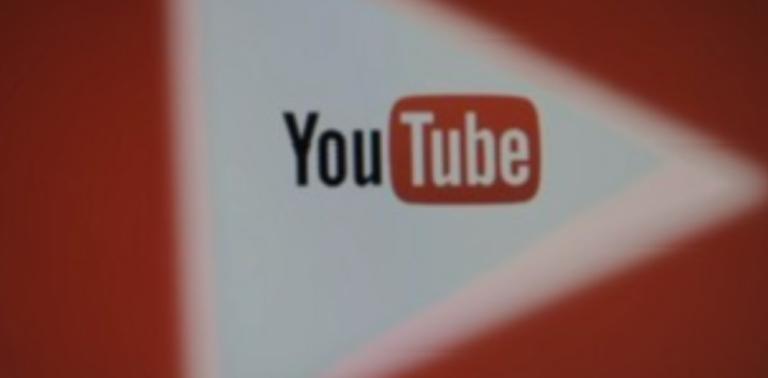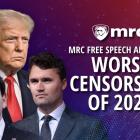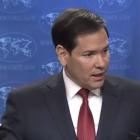YouTube claimed it's slowing down the censorship train, while also touting an increase in certain types of removed content.
This year, YouTube allegedly relaxed its “misinformation” policies, reducing censorship and allowing certain videos of public interest to remain on the platform, according to The New York Times. However, while the platform tried to get its cheerleader news outlet to generate applause after YouTube turned over a new leaf, it made one glaring mistake. YouTube confessed that it has actually increased censorship of videos deemed harmful or abusive by 22 percent, The Times reported and a YouTube spokesperson confirmed to MRC Free Speech America on Monday. Yet, the platform had the nerve to tell MRC, “Our goal remains the same: to protect free expression on YouTube.” The claim is laughable.
While The Times promoted Google’s move as promoting “freedom of expression,” it admitted several paragraphs in that YouTube had not made any public statements on the changes, which were secretly implemented in December 2024. It appears that YouTube sent the information to The Times months after the change occurred internally.
VP of MRC Free Speech America Dan Schneider commented on the platform’s anti-free speech sleight of hand. “Google-owned YouTube, in an act of desperation, appears to have planted this story with the most sympathetic outlet it could find, and it apparently thought touting increased censorship would be a great PR move,” he said. “The New York Times bit hook, line and sinker. Neither thought twice before paradoxically touting increased censorship while framing the platform as pro-freedom of expression.”
This comes as Google faces Federal Trade Commission and Justice Department cases over its potential antitrust violations, such as suppressing free speech and violating privacy.
YouTube spokeswoman Nicole Bell told MRC, “We regularly update our Community Guidelines to adapt to the content we see on YouTube.” She gave the example that YouTube “retired” the COVID-19 section in its Medical Misinformation policy. This appears to have helped reduce the censorship of misinformation by 61 percent, according to Bell, but does not erase the fact that YouTube censored even doctors sharing their clinical experience on the platform, as recorded in MRC’s exclusive CensorTrack database.
Bell also claimed The Times article concerns “a separate aspect of our approach: our long-standing practice of applying exceptions to our policies for content that serves the public interest or has EDSA (educational, documentary, scientific, artistic) context.”
She insisted, however, that these “vital” but rare “exceptions apply to a small fraction of the videos on YouTube.” Rare is the operative word here, as MRC Free Speech America researchers have repeatedly seen the platform selectively enforce this rule.
For example, YouTube censored local government proceedings, including school board meetings, live-streamed during the COVID-19 pandemic at least 15 times. It also censored news reports, including a report by The Hill in 2021 that featured Donald Trump’s claims of voter fraud during the 2020 election. The platform even retroactively age-restricted a thoughtful documentary about the Kenosha Black Lives Matter protests, claiming that a human reviewer had flagged the video.
The Times has indicated that the platform is expanding its allowances for videos like these that may generate debate. “Other content that mentions political, social and cultural issues has also been exempted from YouTube’s usual content guidelines. The platform determined that videos are in the public interest if creators discuss or debate elections, ideologies, movements, race, gender, sexuality, abortion, immigration, censorship and other issues,” The Times reported. YouTube, however, has much to prove if it wants users to believe it will not simply continue to selectively enforce its rules.
The platform is also not off the hook for its increased censorship of certain content. “Q1 2025 alone, we removed 192,856 videos for violating our hateful or abusive policies – a 22% year-over-year increase,” Bell said. While there is certainly ugly and repulsive content on the platform that YouTube is not obligated to keep up, what passes for “hateful” is not always so clear-cut.
For example, in 2021, podcast host Steven Crowder had an episode of his show removed for alleged hate speech after he discussed the issue of transgender identifying men being transferred to women’s prisons and cases of alleged sexual abuse. In August 2024, Crowder was suspended again for “harassment” over critiques of the Biden administration and Google.
Last August, YouTube reportedly removed six videos posted by former combat veteran, journalist, and comedian Drew Hernandez for his show Frontlines for purported "hate speech". The content, which broadly focused on the grooming and sexualization of children, was flagged and restricted by YouTube.
In 2023, YouTube removed an episode of Jordan Peterson's podcast that featured an interview with Economist journalist Helen Joyce about her book Trans: When Ideology Meets Reality. In the video, the pair discussed the transgender movement's corruption of language, the reasons why women are so susceptible to gender ideology and the interaction between the ideology and raising children.
Free Speech is under attack. Contact your representatives and demand that Big Tech be held to account to mirror the First Amendment and provide an equal platform for all users. If you have been censored, contact us using MRC Free Speech America’s contact form, and help us hold Big Tech accountable.








